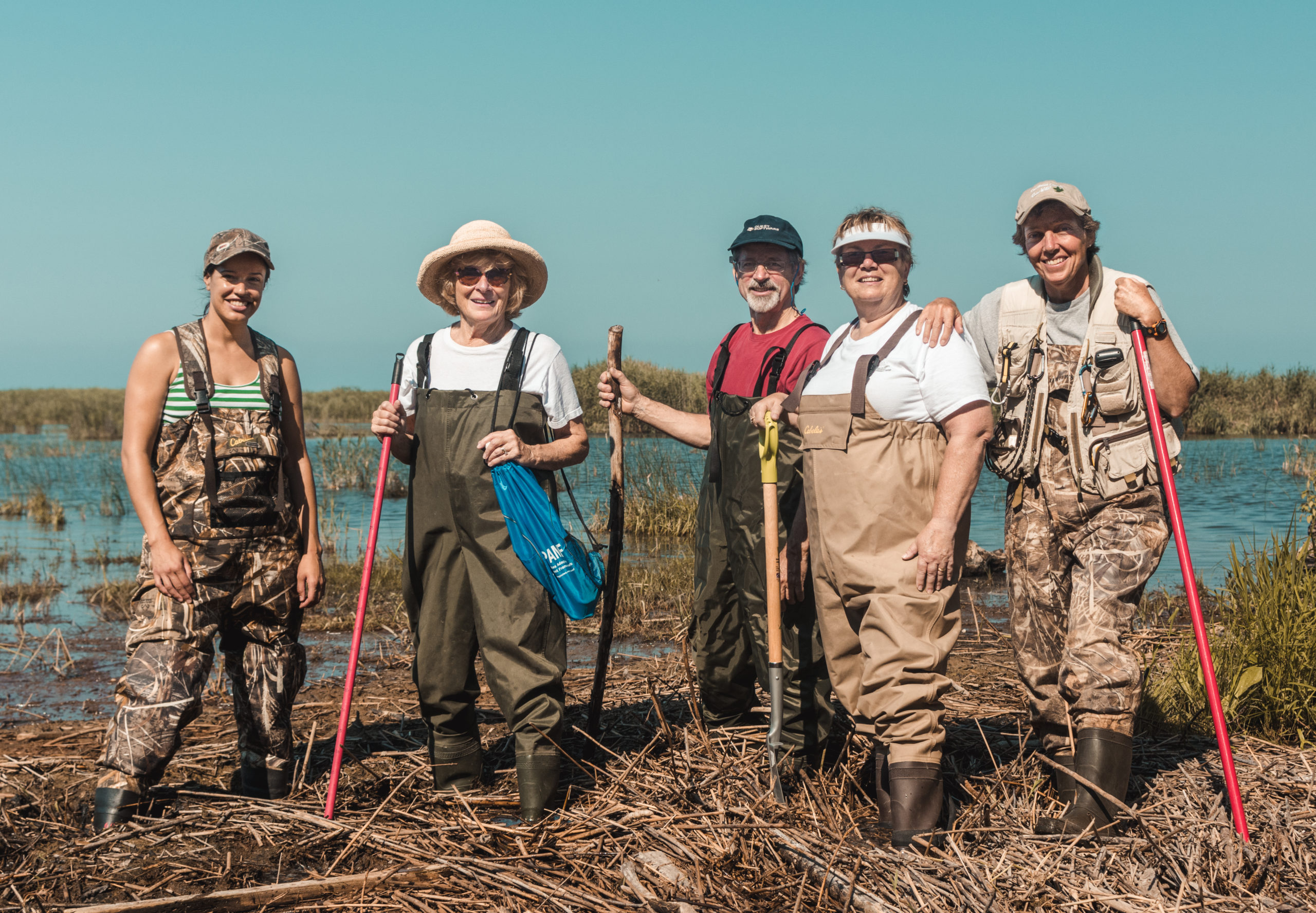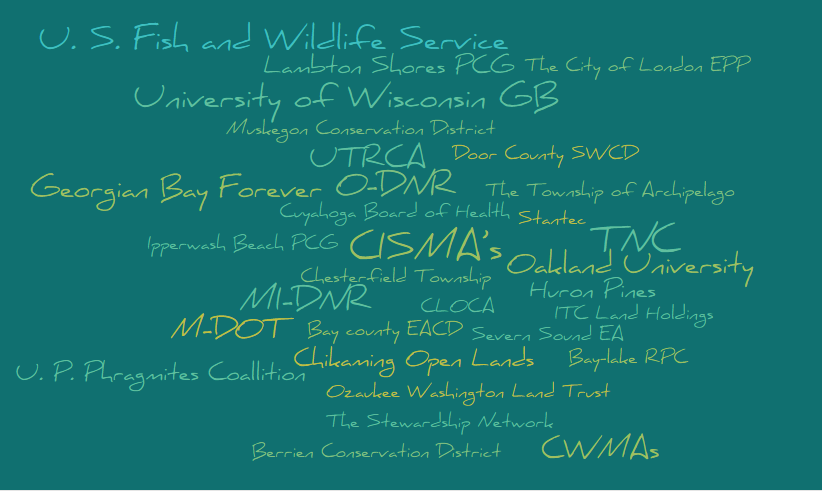
October 2, 2017 | PAMF program staff
We are excited to report the kickoff for the pilot year of the Phragmites Adaptive Management Framework (PAMF)! After working with our Technical Working Group to finalize development of PAMF and ensure that the PAMF Participant Guide is clear and concise, we began a series of trainings for land managers interested in using this citizen-science tool. A good portion of the stakeholders who attended these trainings went on to participate in this first, pilot year, of PAMF. Beginning in July, these participants allowed us to enroll and monitor the non-native Phragmites on their land. Visiting each participant gave us a good understanding of their needs, and the opportunity to field test our monitoring protocol and improve communication strategies.
Meeting with all these PAMF-tastic participants and getting to visit many beautiful (albeit Phragmites-invaded) areas of the Great Lakes Basin (GLB) made the long hours of driving totally worth it. It is the team’s general feeling that we encountered welcoming participants who are very well aware of the benefits PAMF provides, and how their enrollment is crucial for this framework to succeed. Their interest and willingness to participate is a testament to the public need for collaboration on a greater scale, and also to the awareness that Phragmites is a large-scale problem that needs a large-scale solution –the sense of community is in the air! Over the course of this summer, we met with 110 people from over 30 organizations (non-profit, municipal, provincial, state, federal, private landowners, academics, and private contractors) at the trainings we put on around the GLB. We worked with 35 participants to enroll and monitor 93 management units across four states and one province.
The Phragmites-management community is constantly learning by doing, but these experiences need to be shared across the landscape in order for everyone to benefit. One of the main goals of PAMF is precisely that –to use an adaptive management strategy that will maximize the efficacy of every Phragmites treatment for each involved land manager and land owner in the GLB. This year’s participants are currently moving through the treatment process for their management units. We are excited to see the land manager participation in PAMF grow next year! This citizen-science and decision support tool will be fully available for all interested land managers to use in time for the 2018 growing season. If you want to learn more about PAMF or if you are interested in participating next year, please visit our website or contact Karen Alexander (kalexander@glc.org.)
Header photo credit: Sam Schurkamp
Organizations present at PAMF training events:

